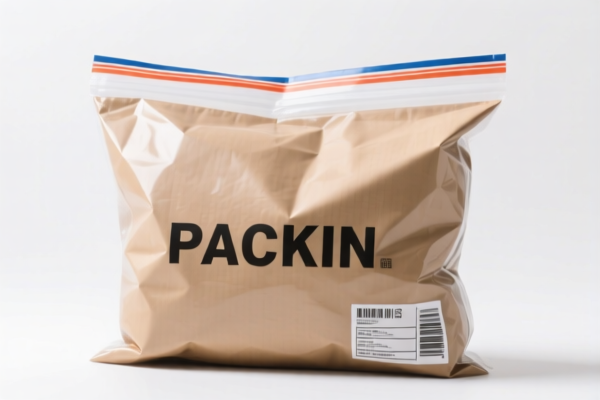Found 8 matching results
(CN → US)
| HS Code | Official Doc | Tariff Rate | Origin | Destination | Effective Date |
|---|---|---|---|---|---|
| 3923210011 | Doc | 58.0% | CN | US | 2025-05-12 |
| 3923210030 | Doc | 58.0% | CN | US | 2025-05-12 |
| 8309900090 | Doc | 57.6% | CN | US | 2025-05-12 |
| 8309900010 | Doc | 57.6% | CN | US | 2025-05-12 |
| 4819400020 | Doc | 55.0% | CN | US | 2025-05-12 |
| 4819300020 | Doc | 55.0% | CN | US | 2025-05-12 |
| 4823906000 | Doc | 55.0% | CN | US | 2025-05-12 |
| 4823908000 | Doc | 55.0% | CN | US | 2025-05-12 |




HS Code Classification for "SEALING BAG"
Based on the provided reference data, classifying "SEALING BAG" requires careful consideration of the material and specific features. Here's a breakdown of potential HS codes, categorized by likely material composition and features:
1. Plastics-based Sealing Bags (Most Common)
- 3923210011: Articles for the conveyance or packing of goods, of plastics; stoppers, lids, caps and other closures, of plastics: Sacks and bags (including cones): Of polymers of ethylene Reclosable, with integral extruded closure: With no single side exceeding 75 mm in length.
- 39: Plastics and articles thereof. (Indicates the material is plastic)
- 23: Packing materials, including of plastics. (Specifies it's for packaging)
- 21: Sacks and bags. (Specifically categorizes it as a bag)
- 0011: Further specifies ethylene polymer, reclosable, small size (<75mm). Suitable for small, resealable plastic bags like those used for food or small parts.
- 3923210030: Articles for the conveyance or packing of goods, of plastics; stoppers, lids, caps and other closures, of plastics: Sacks and bags (including cones): Of polymers of ethylene Reclosable, with integral extruded closure: Other.
- 39: Plastics and articles thereof.
- 23: Packing materials, including of plastics.
- 21: Sacks and bags.
- 0030: Ethylene polymer, reclosable, other size (≥75mm). For larger resealable plastic bags.
2. Paper-based Sealing Bags
- 4819400020: Cartons, boxes, cases, bags and other packing containers, of paper, paperboard, cellulose wadding or webs of cellulose fibers; box files, letter trays and similar articles, of paper or paperboard of a kind used in offices, shops or the like: Other sacks and bags, including cones Shipping sacks and multiwall bags, other than grocers' bags.
- 48: Paper and paperboard; articles thereof.
- 19: Boxes, bags, etc., of paper.
- 40: Other sacks and bags. Suitable for larger, heavier-duty paper shipping sacks.
- 4819300020: Cartons, boxes, cases, bags and other packing containers, of paper, paperboard, cellulose wadding or webs of cellulose fibers; box files, letter trays and similar articles, of paper or paperboard of a kind used in offices, shops or the like: Sacks and bags, having a base of a width of
40 cm or more Shipping sacks and multiwall bags, other than grocers' bags.- 48: Paper and paperboard; articles thereof.
- 19: Boxes, bags, etc., of paper.
- 30: Sacks and bags, wider base. For larger paper bags with a base width of 40cm or more.
3. Other Materials (Less Common)
- 8309900090: Stoppers, caps and lids (including crown corks, screw caps and pouring stoppers), capsules for bottles, threaded bungs, bung covers, seals and other packing accessories, and parts thereof, of base metal: Other Other.
- 83: Miscellaneous articles of base metal.
- 09: Closures, seals, etc., of base metal. If the sealing bag incorporates metal closures or seals.
Important Considerations & Recommendations:
- Material Composition: The primary material (plastic, paper, metal) is critical for correct classification.
- Closure Type: Is it reclosable (zipper, clip)? Or a simple heat seal?
- Dimensions: The size of the bag (width, length) can affect the HS code.
- Intended Use: What is being sealed in the bag? (Food, industrial parts, etc.)
- Detailed Description: Provide a more detailed description of the bag's features to help refine the classification.
- Import Regulations: Check the specific import regulations of the destination country for any additional requirements.
Action Required:
- Confirm Material: Verify the exact material composition of the sealing bag.
- Measure Dimensions: Accurately measure the width and length of the bag.
- Provide Detailed Description: Include information about the closure type, thickness, and intended use.
Disclaimer: This information is for general guidance only. The final HS code classification should be determined by customs authorities based on the specific characteristics of the product and relevant import regulations.
Customer Reviews
No reviews yet.